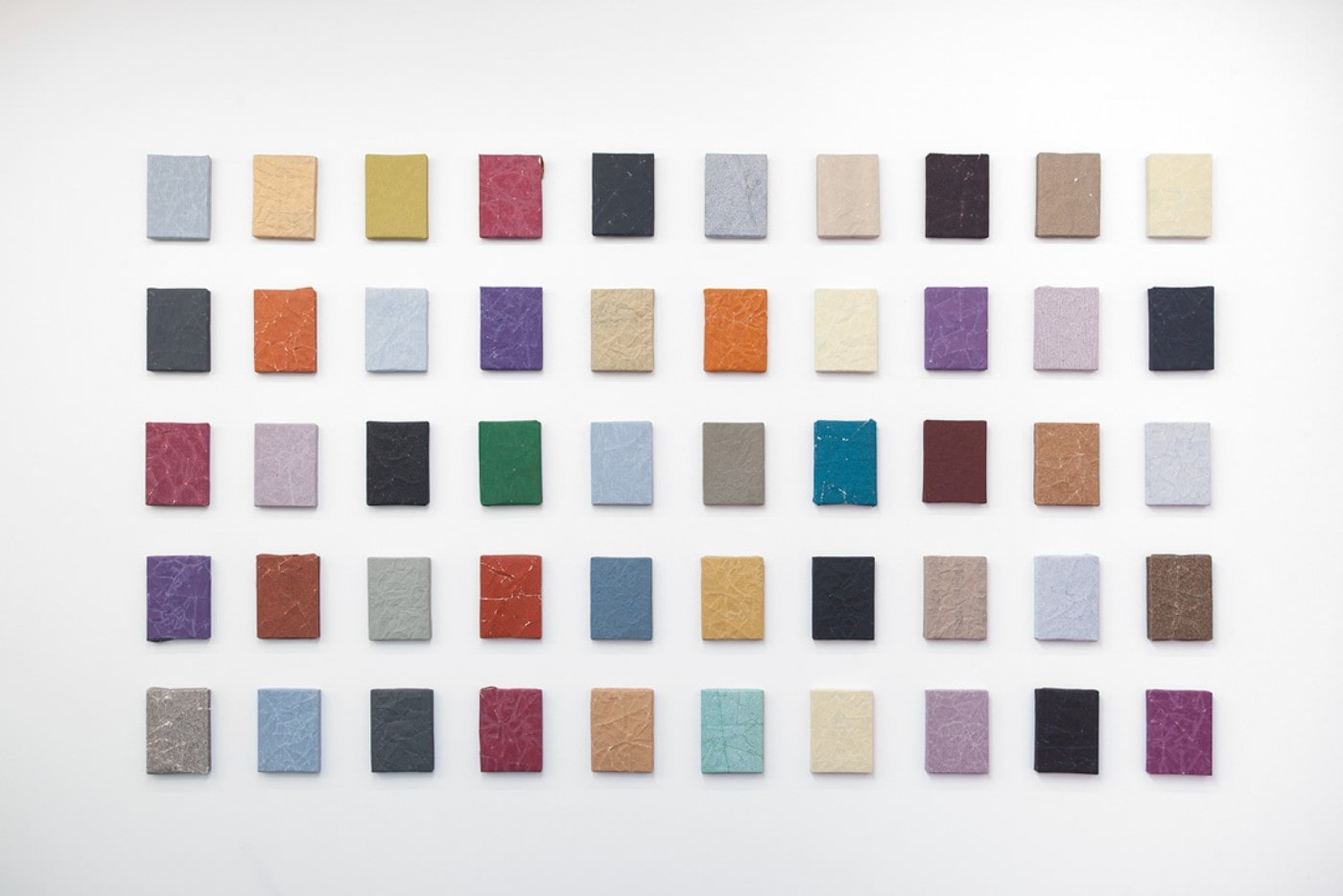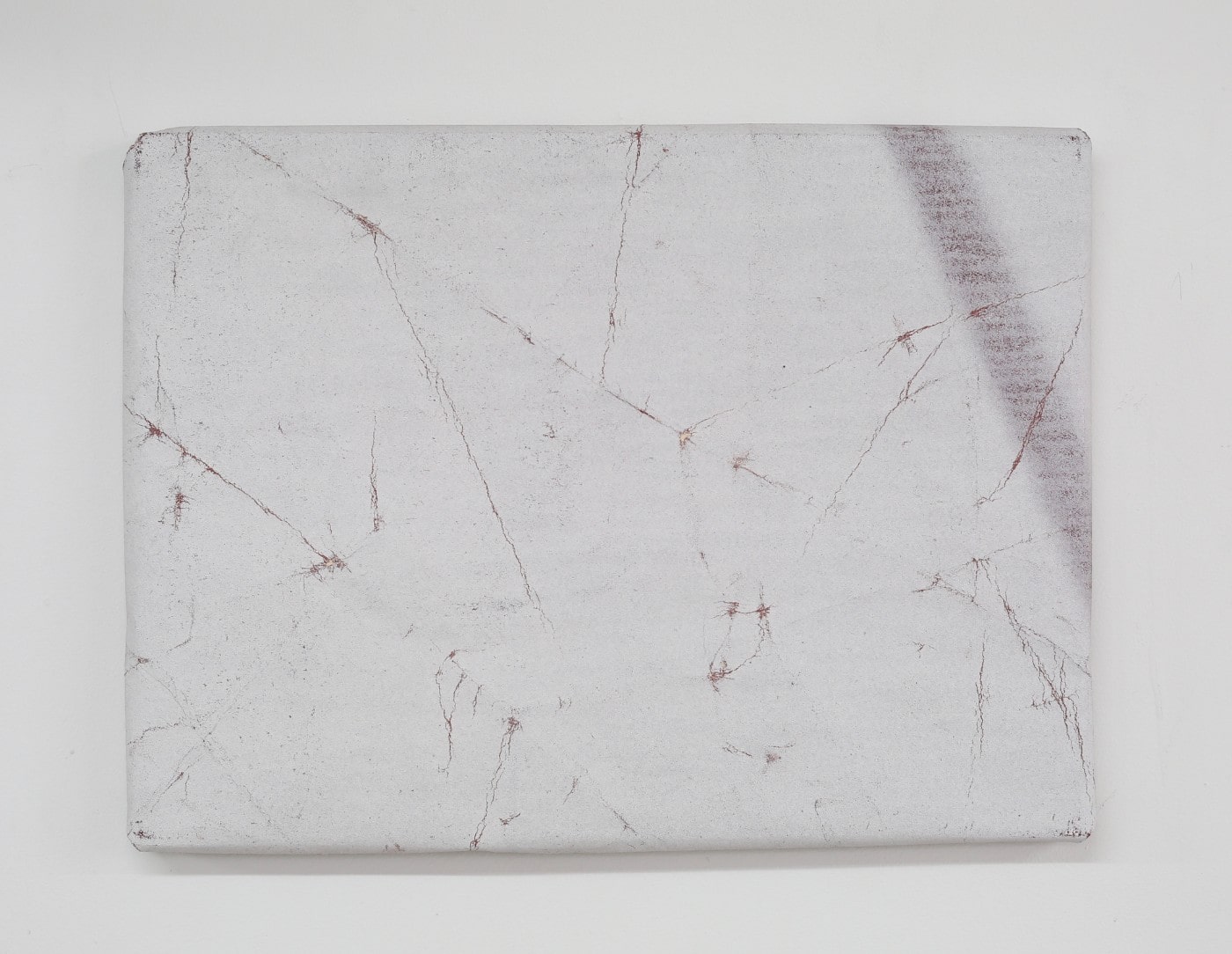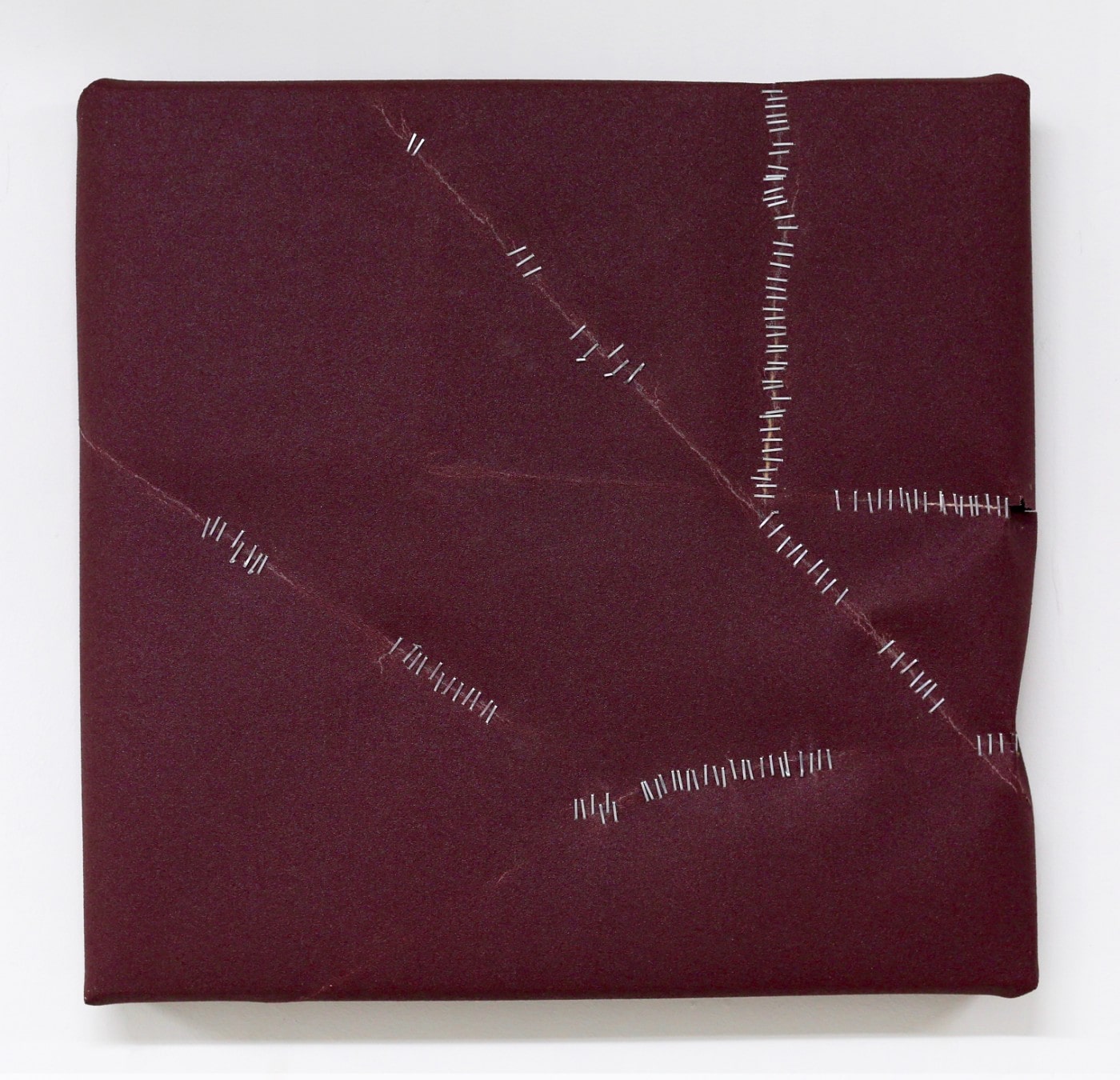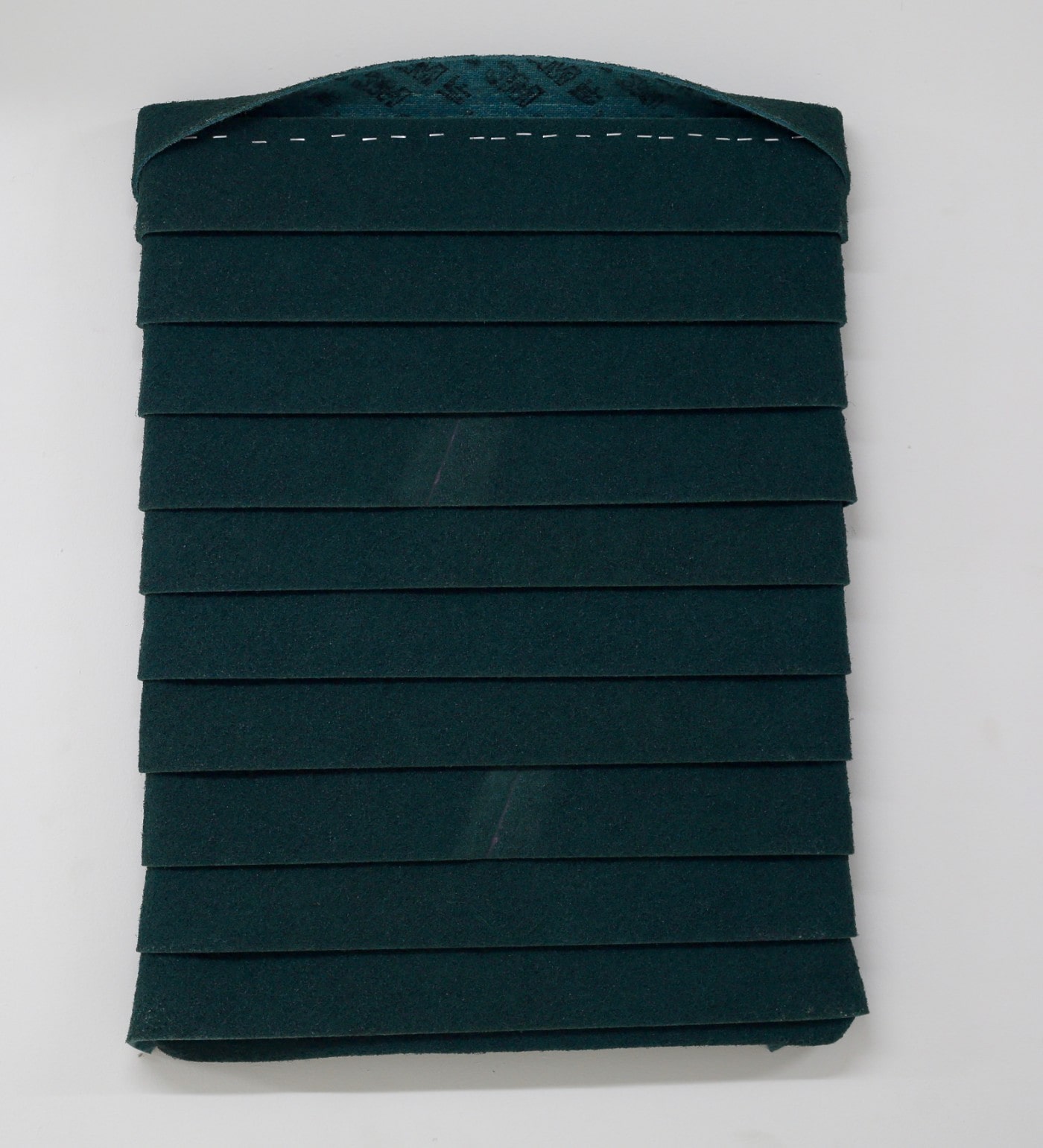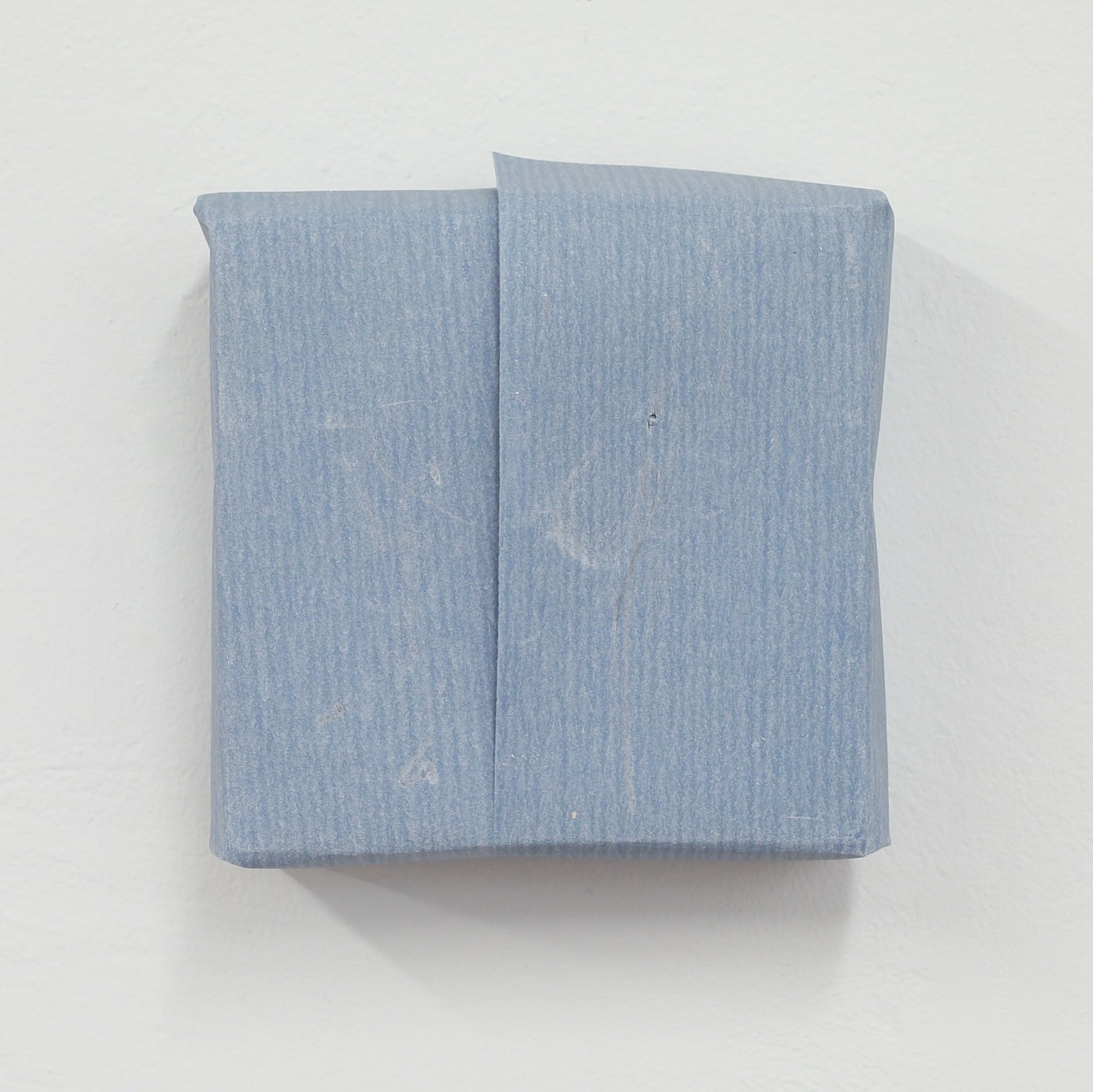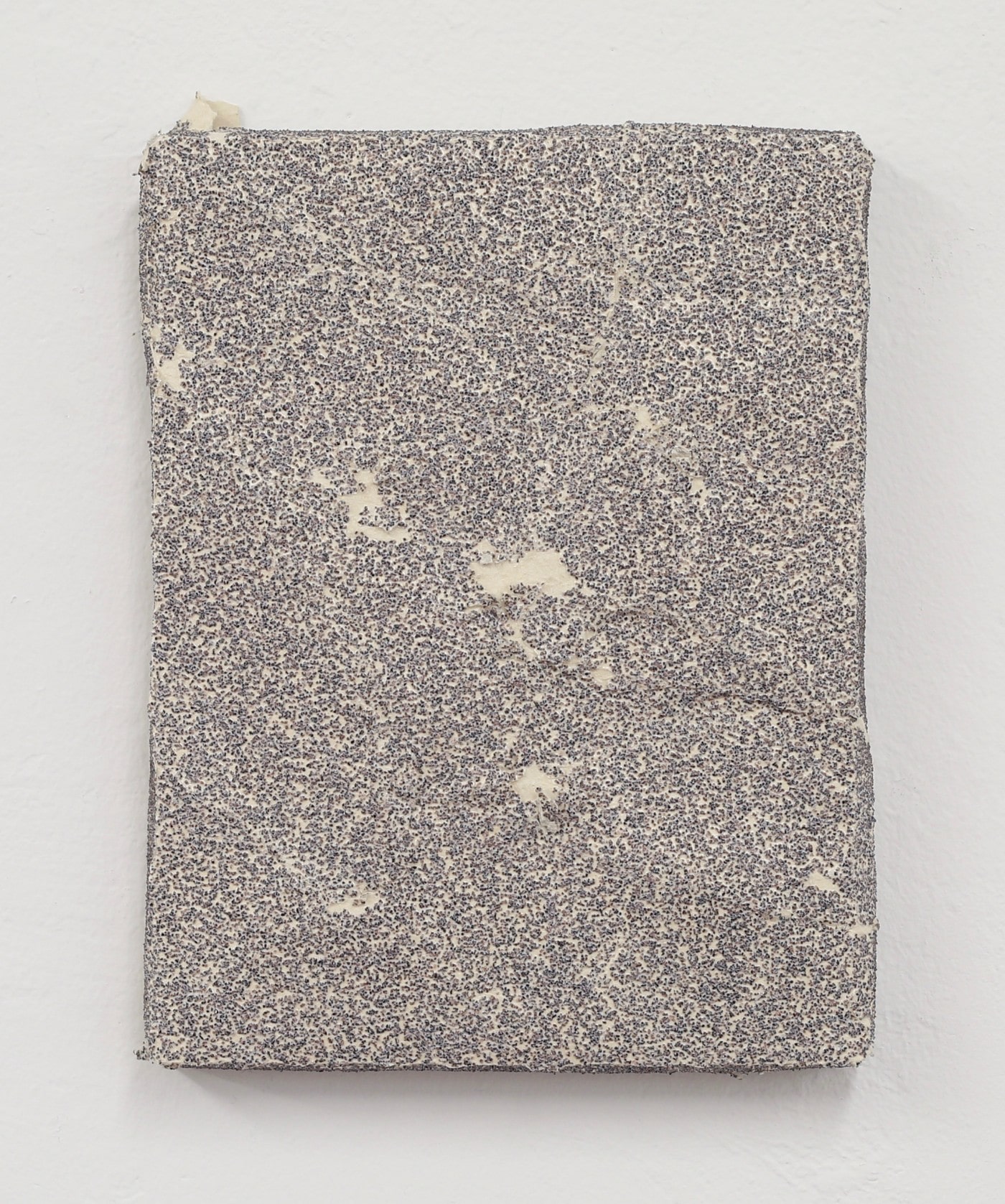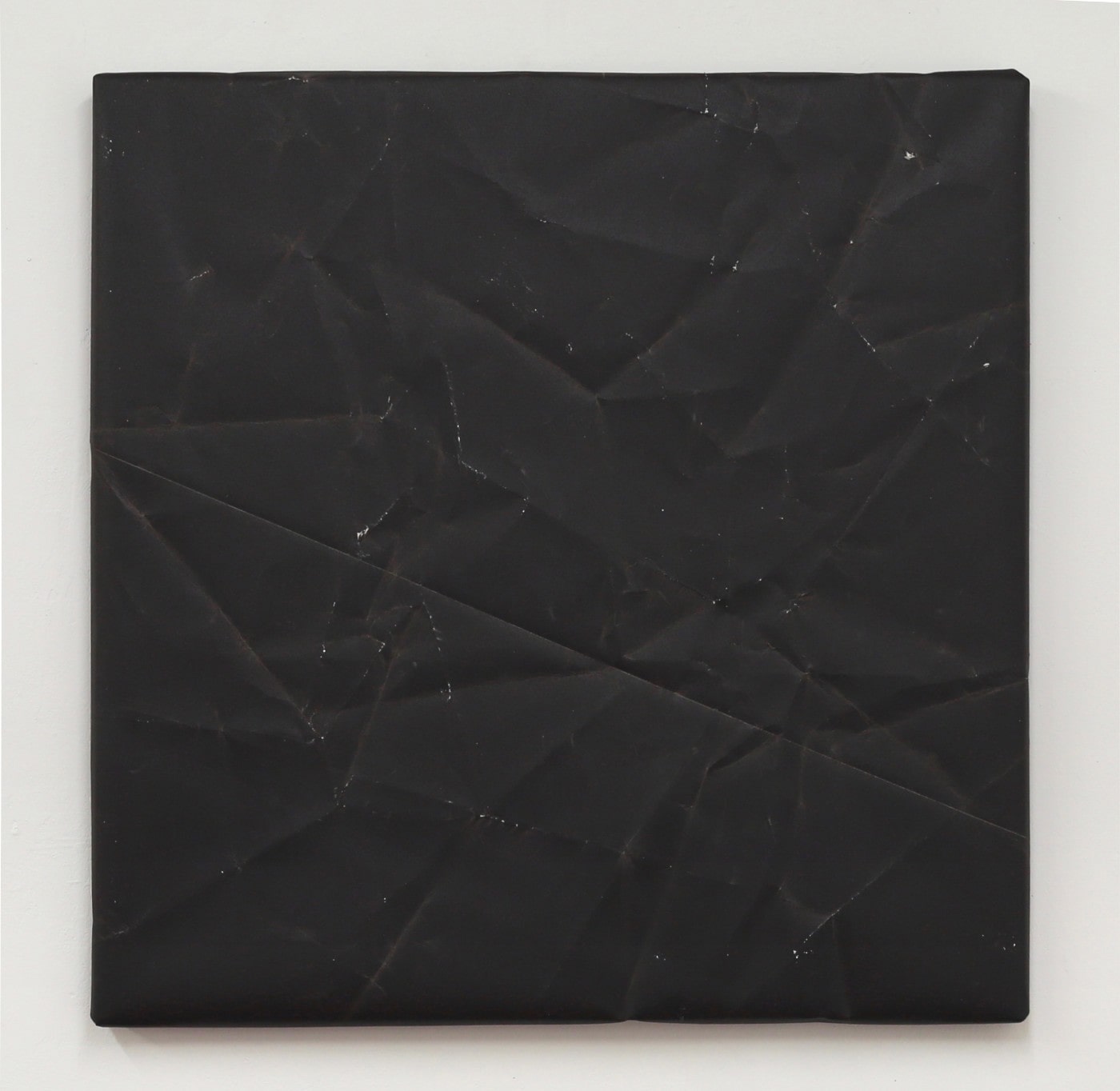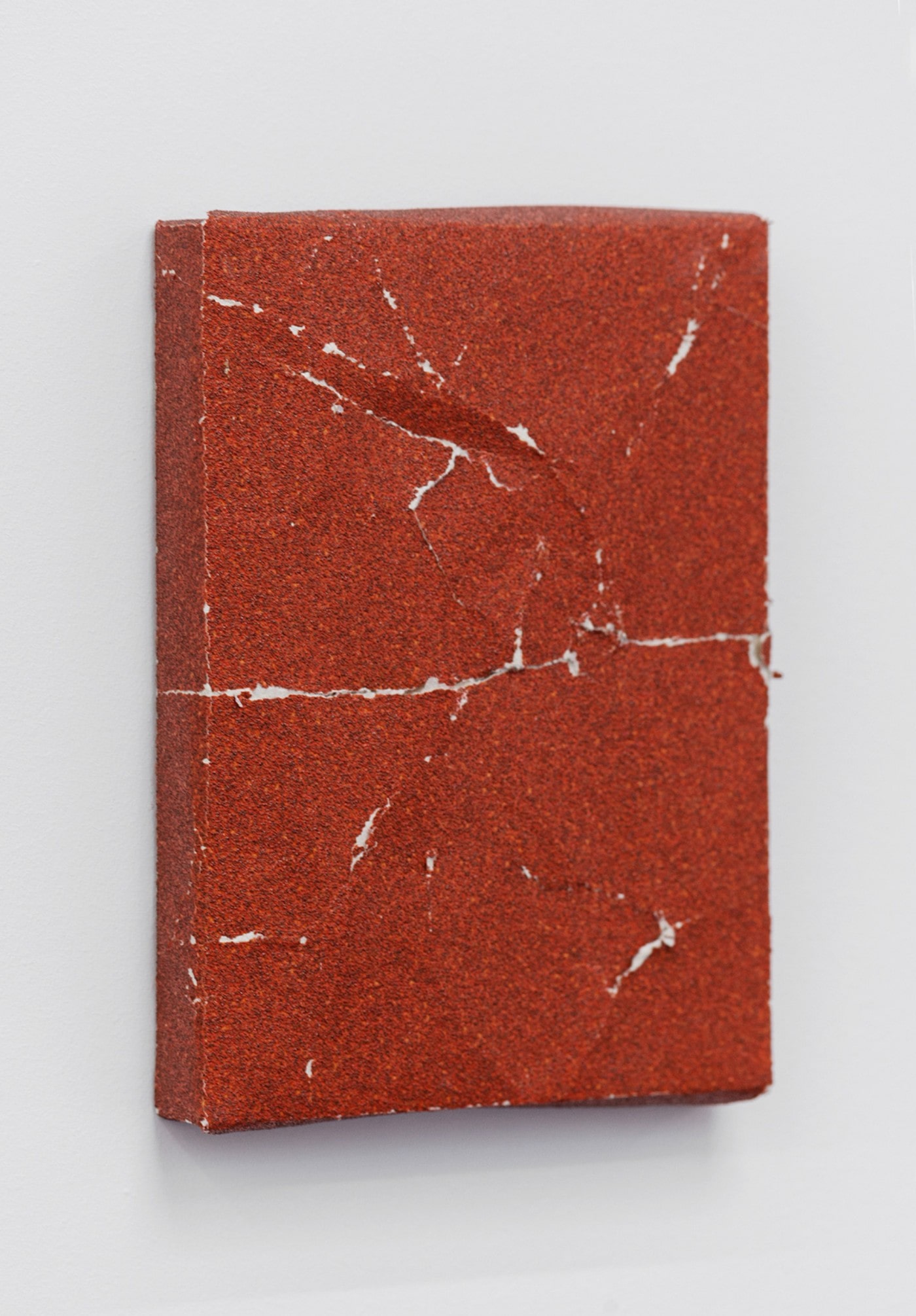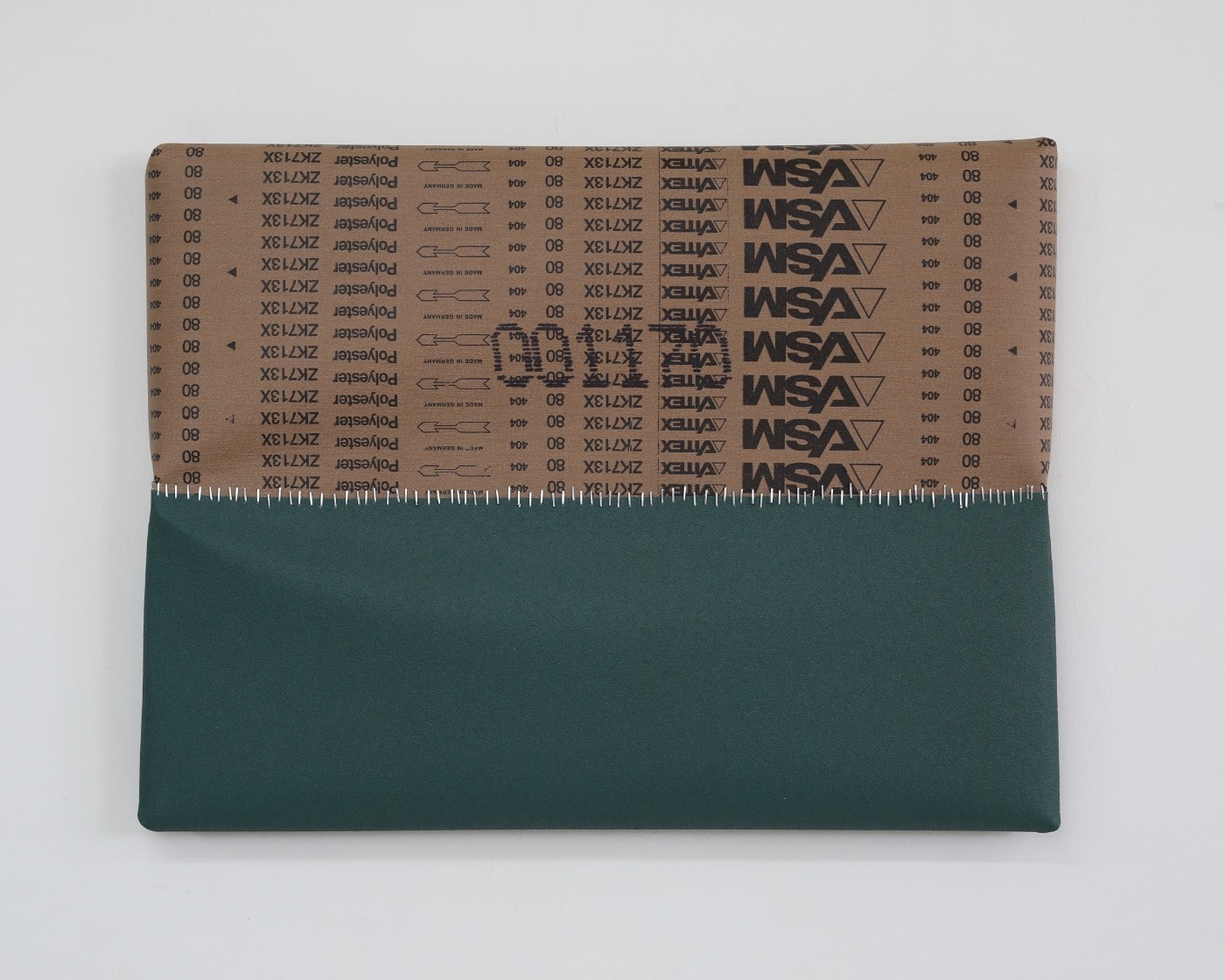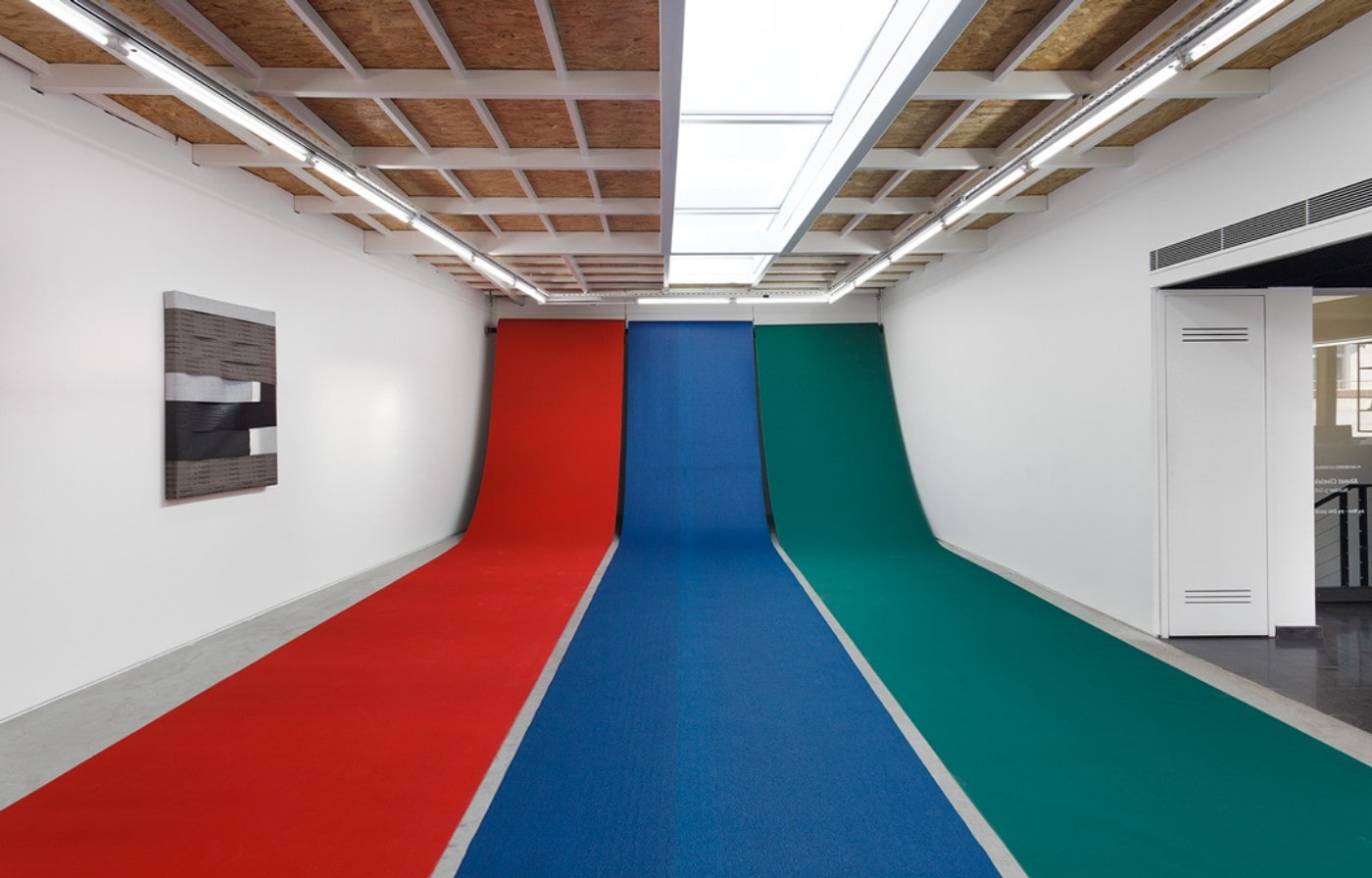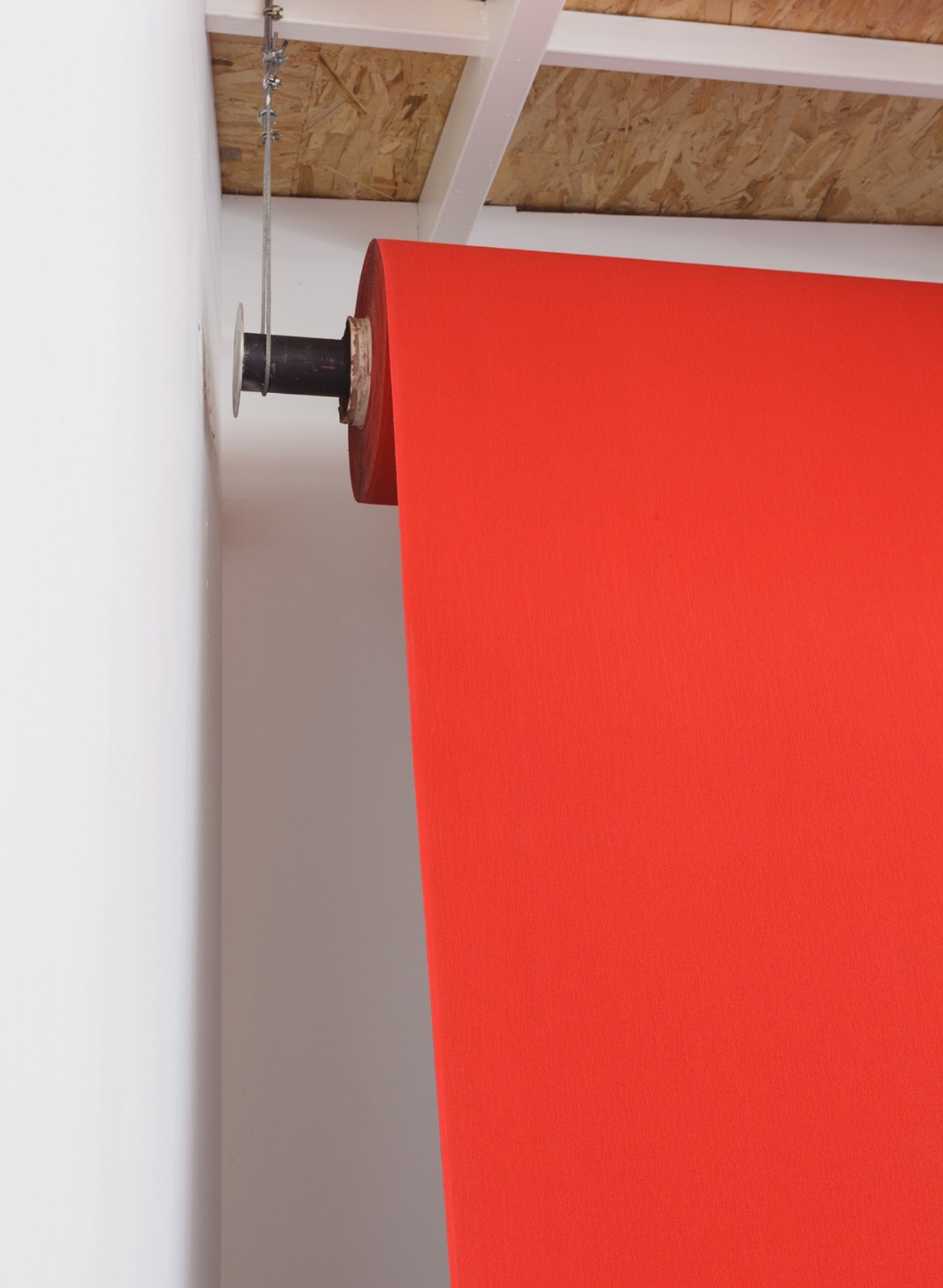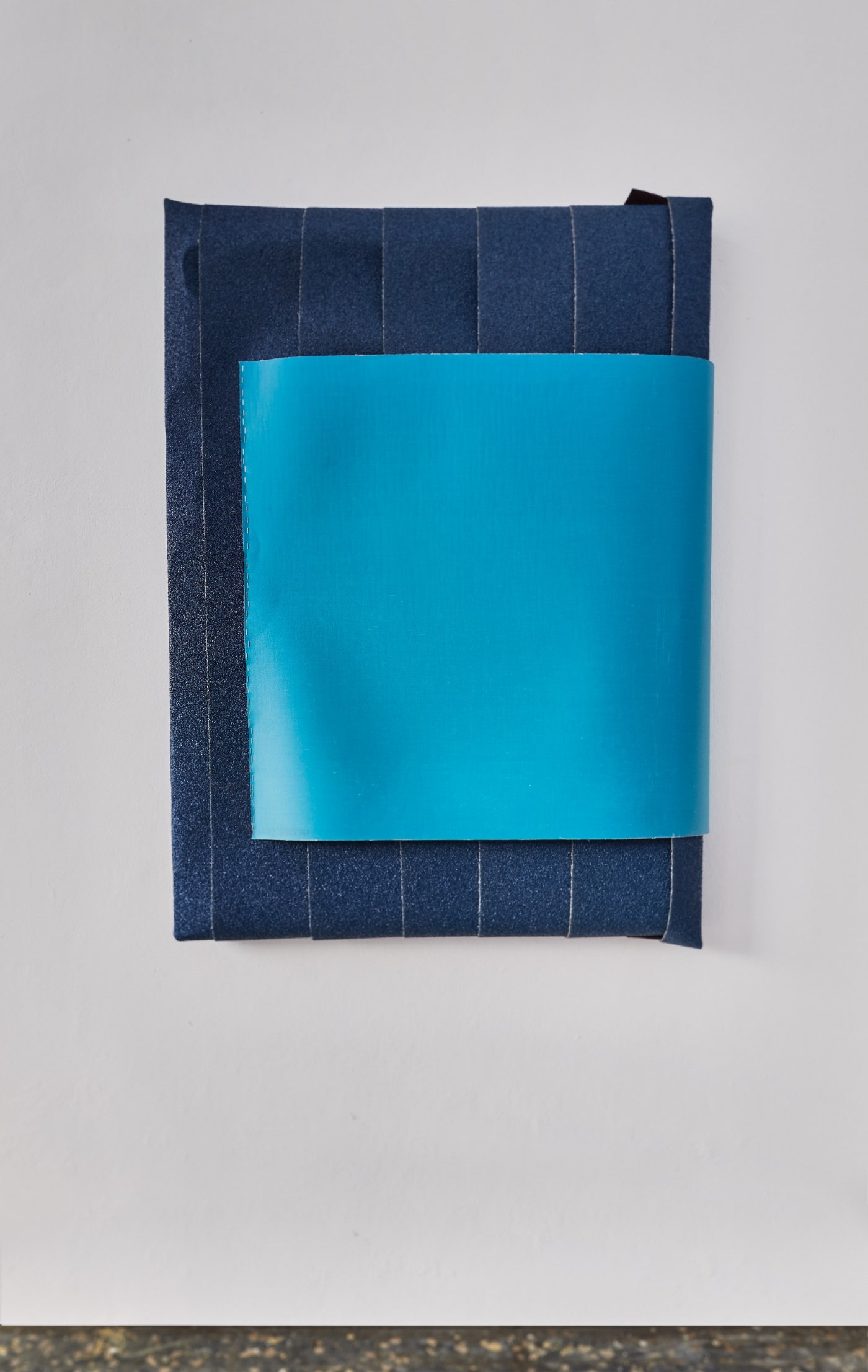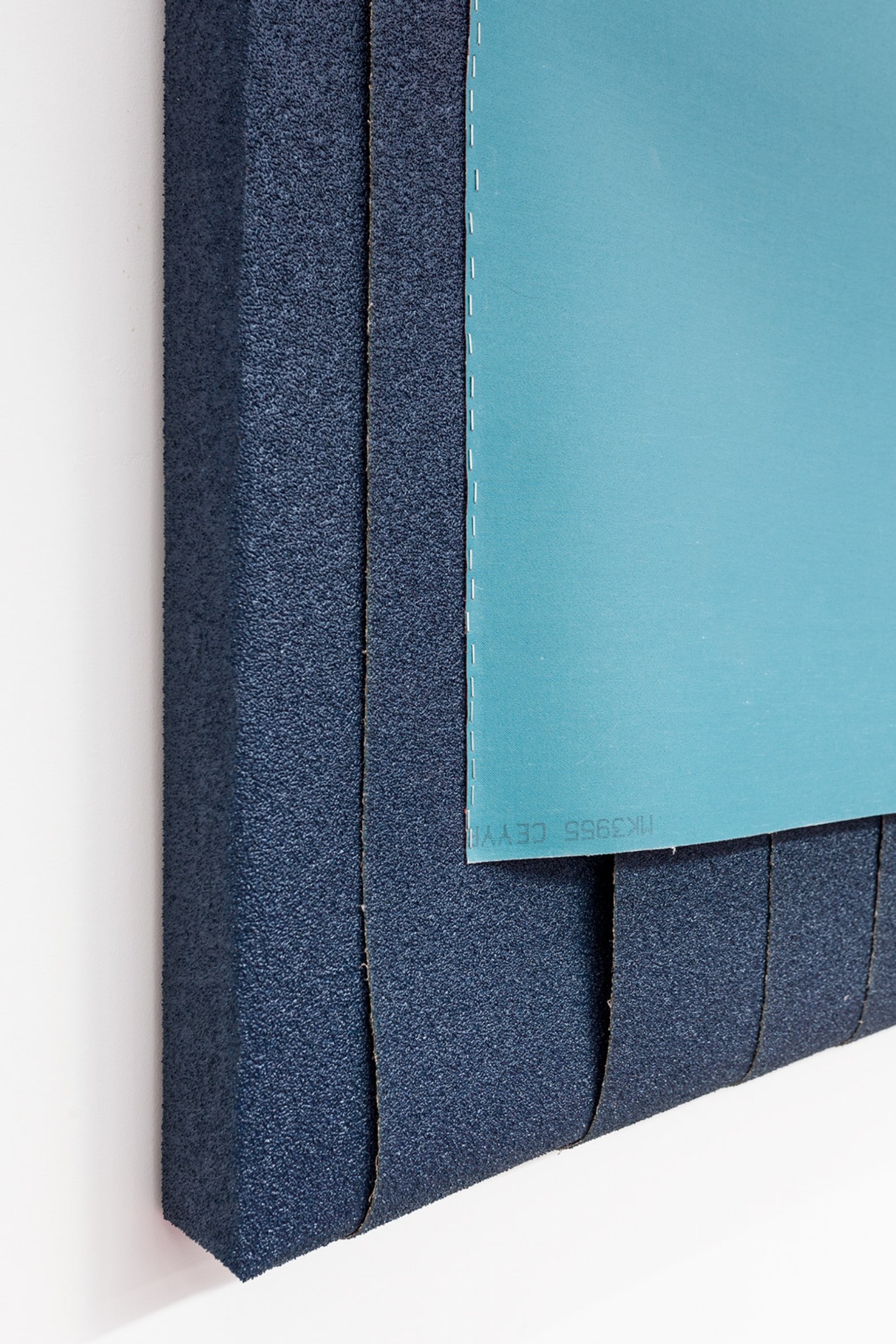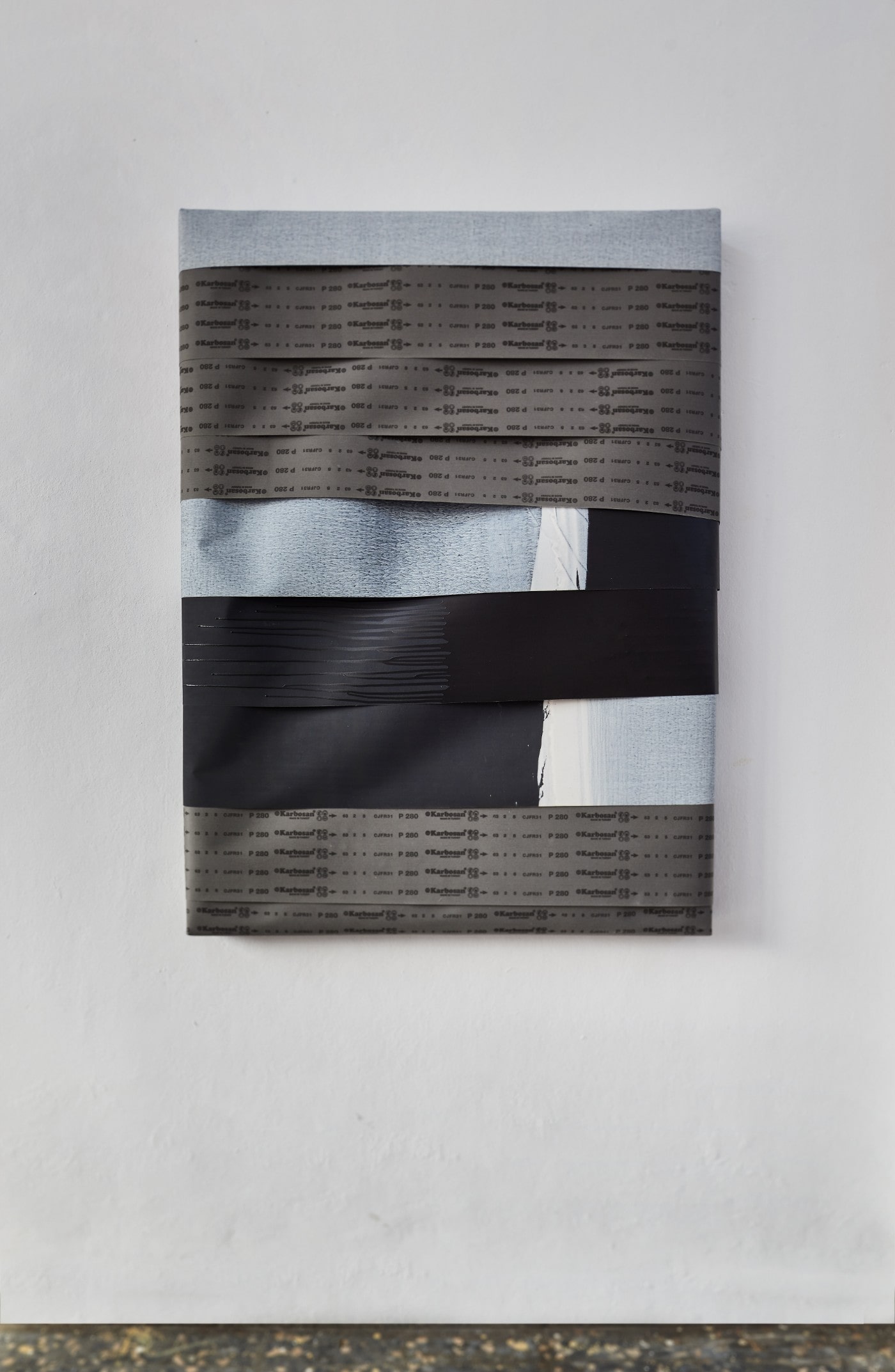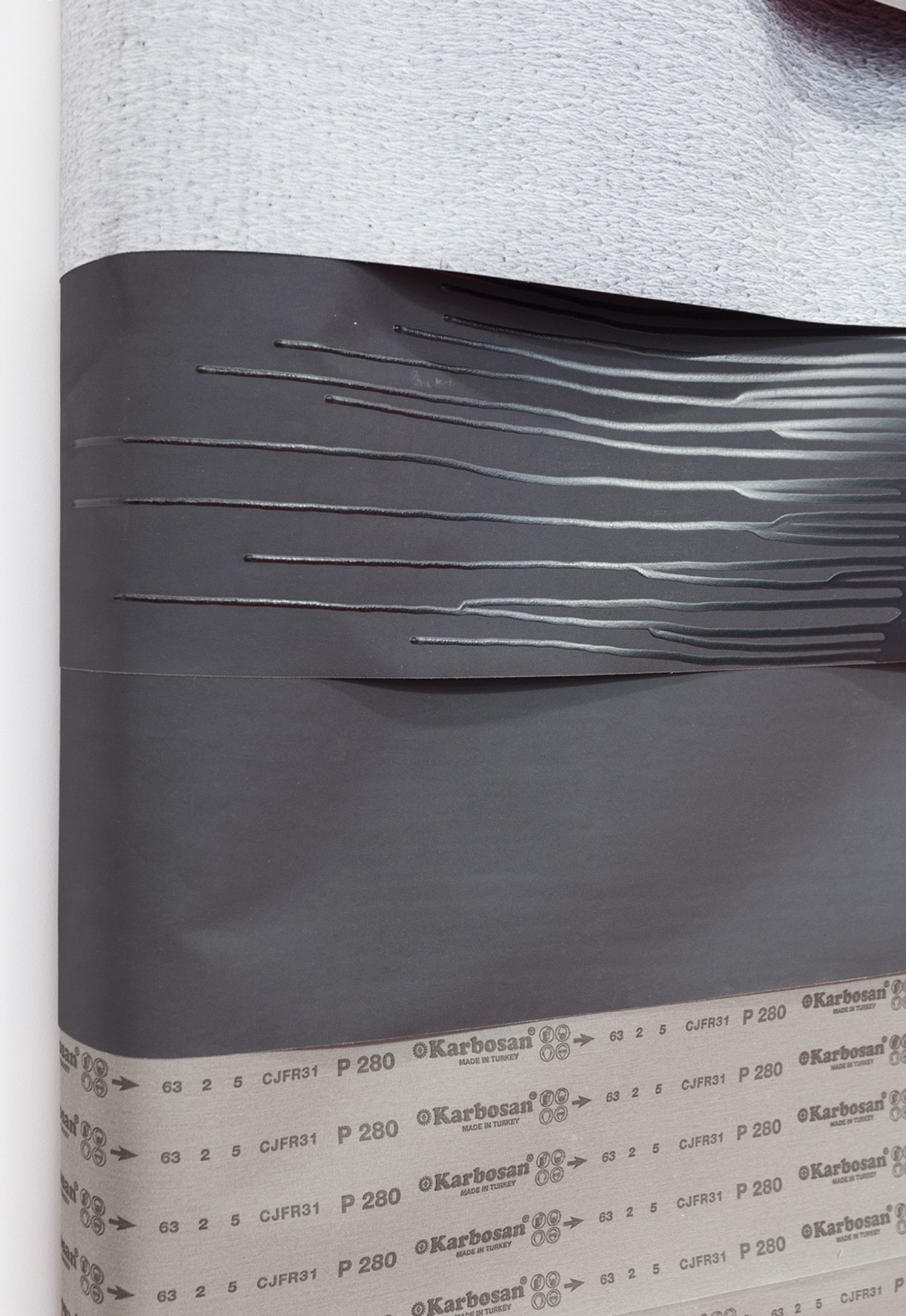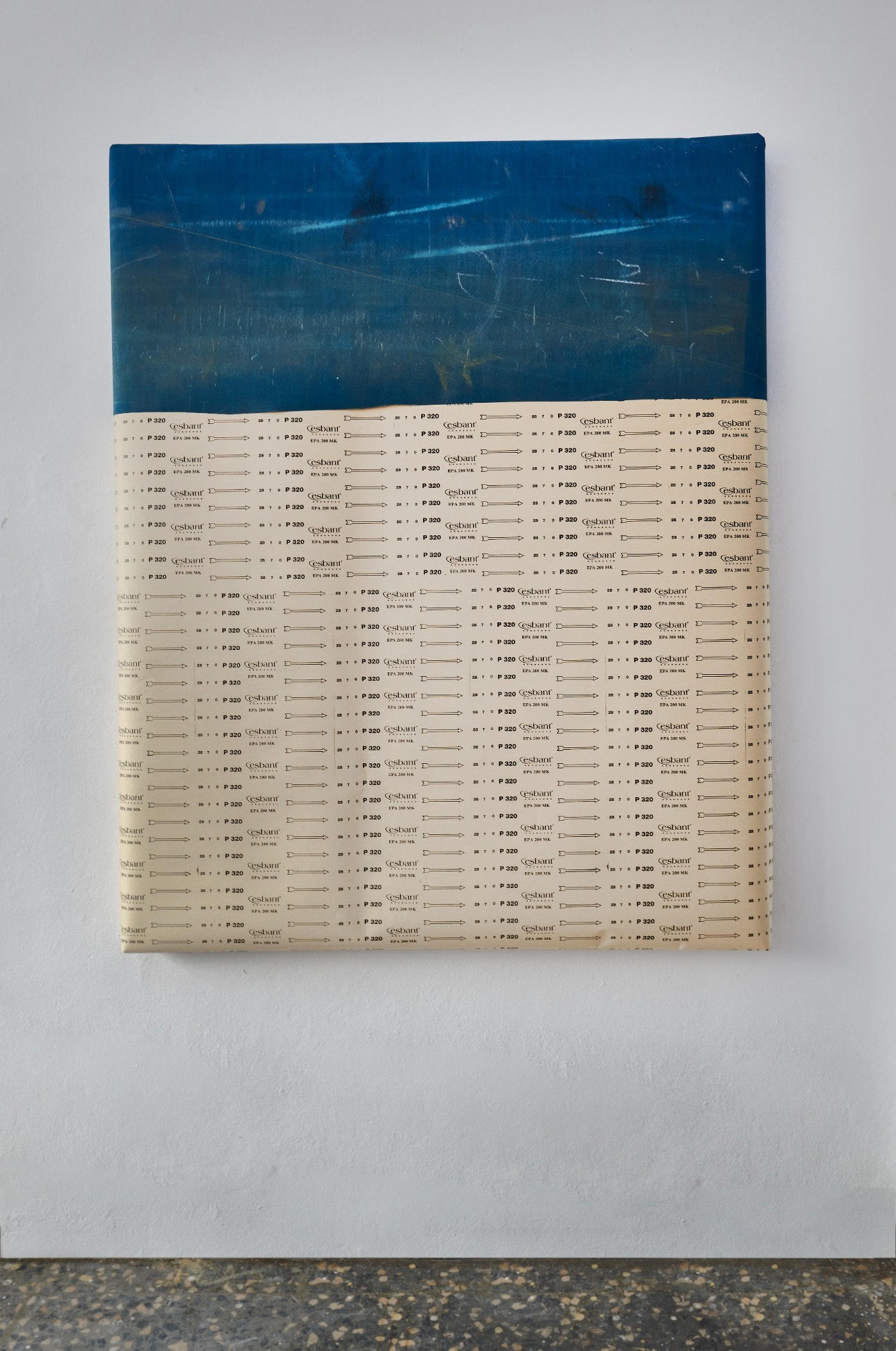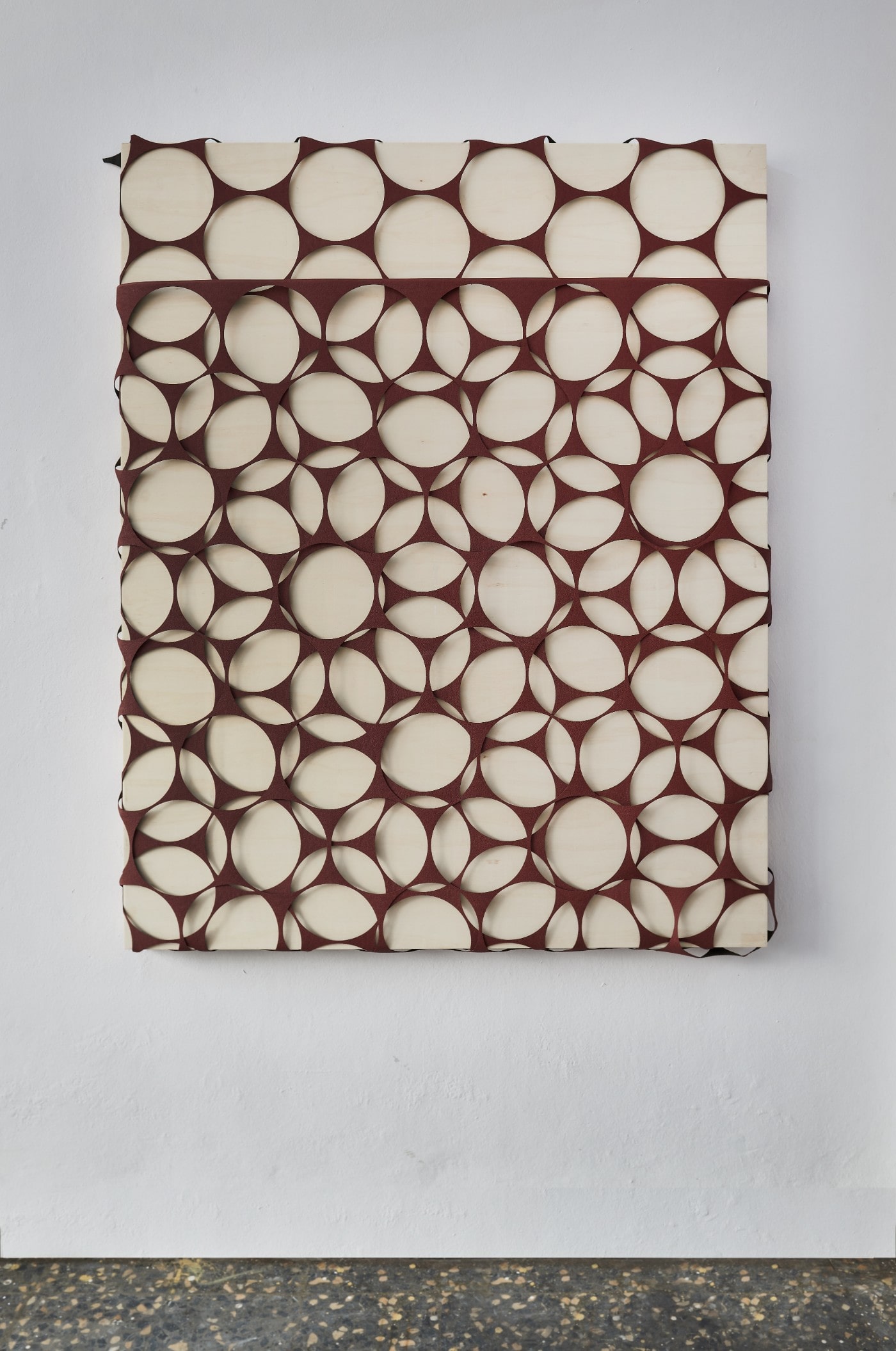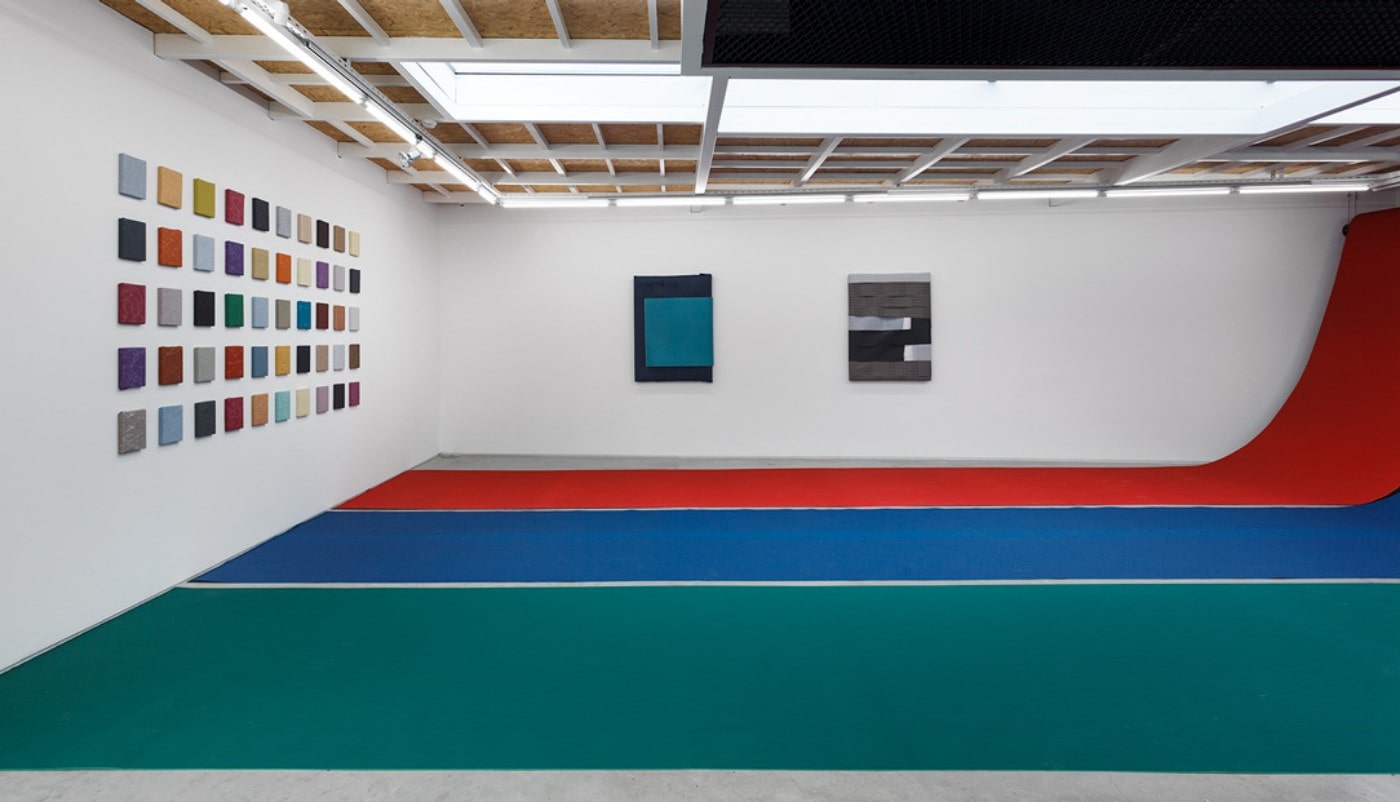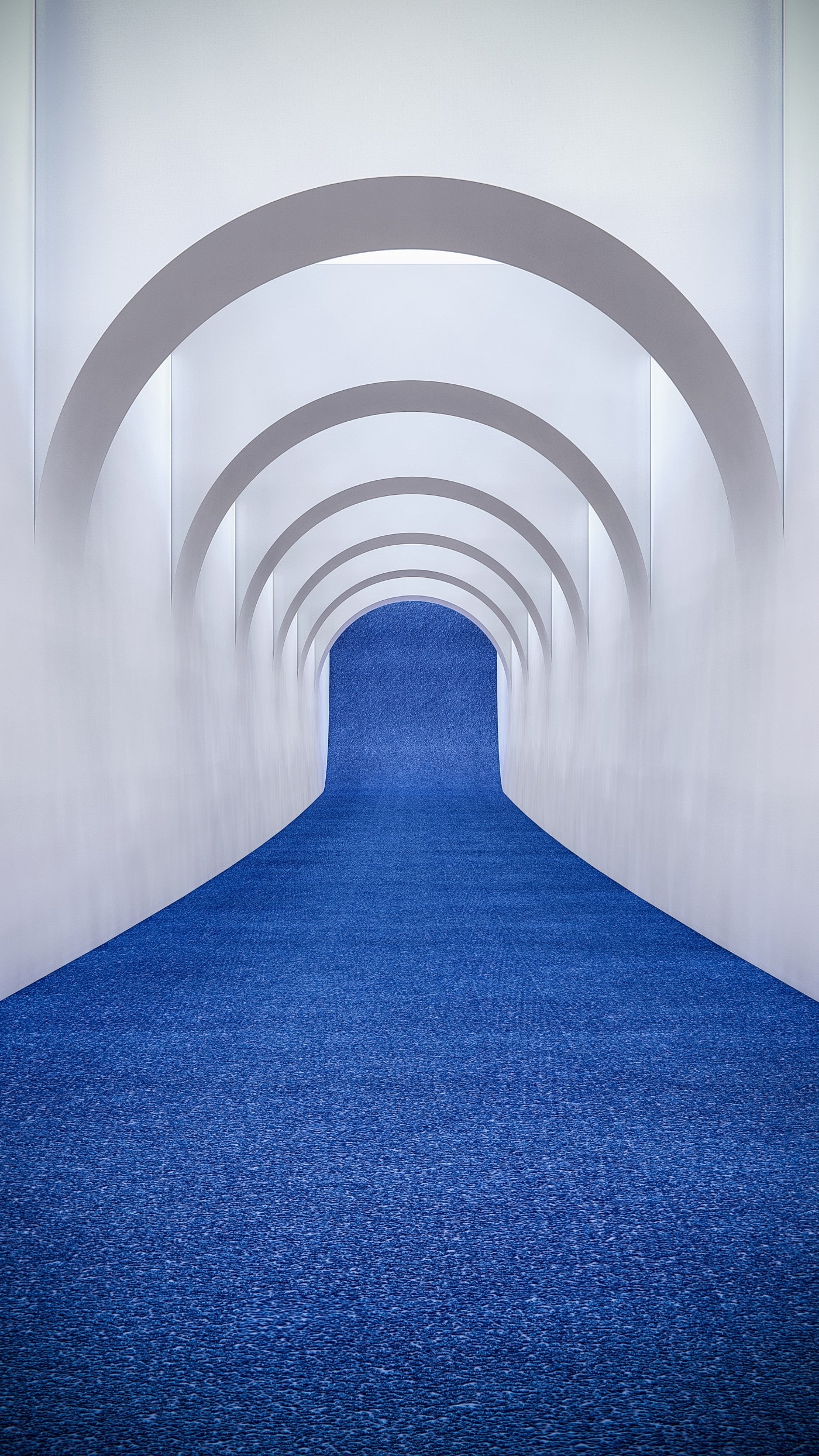For his third solo exhibition, Turkish-American multimedia artist Ahmet Civelek exposes the subtler aspects of destruction through a series of works that utilise sandpaper as their main material. This new body of work continues Civelek's year-long preoccupation with the potential of destruction as a creative act, as well as his constant engagement with found objects for the creation of assemblages on canvas. At the exhibition Number 3: Grit Civelek has covered the entire gallery floor with rolls of sandpaper, on which visitors have to walk in order to approach the smaller works on the wall. According to the press release, visitors to the gallery have to sign a waiver before interacting with the piece.
The mutual wearing off of the sandpaper floor and the shoes that step on it places visitors right in the middle of the self-destructive relationship sandpaper has with the things it touches. Meanwhile, the works on the wall are similar to the artist's previous "painting" series, where he covers canvas frames with found objects. The more recent "sandpaper paintings" feature pieces of sandpaper — both worn and pristine — that are stretched or nailed on wooden frames to create abstract compositions.
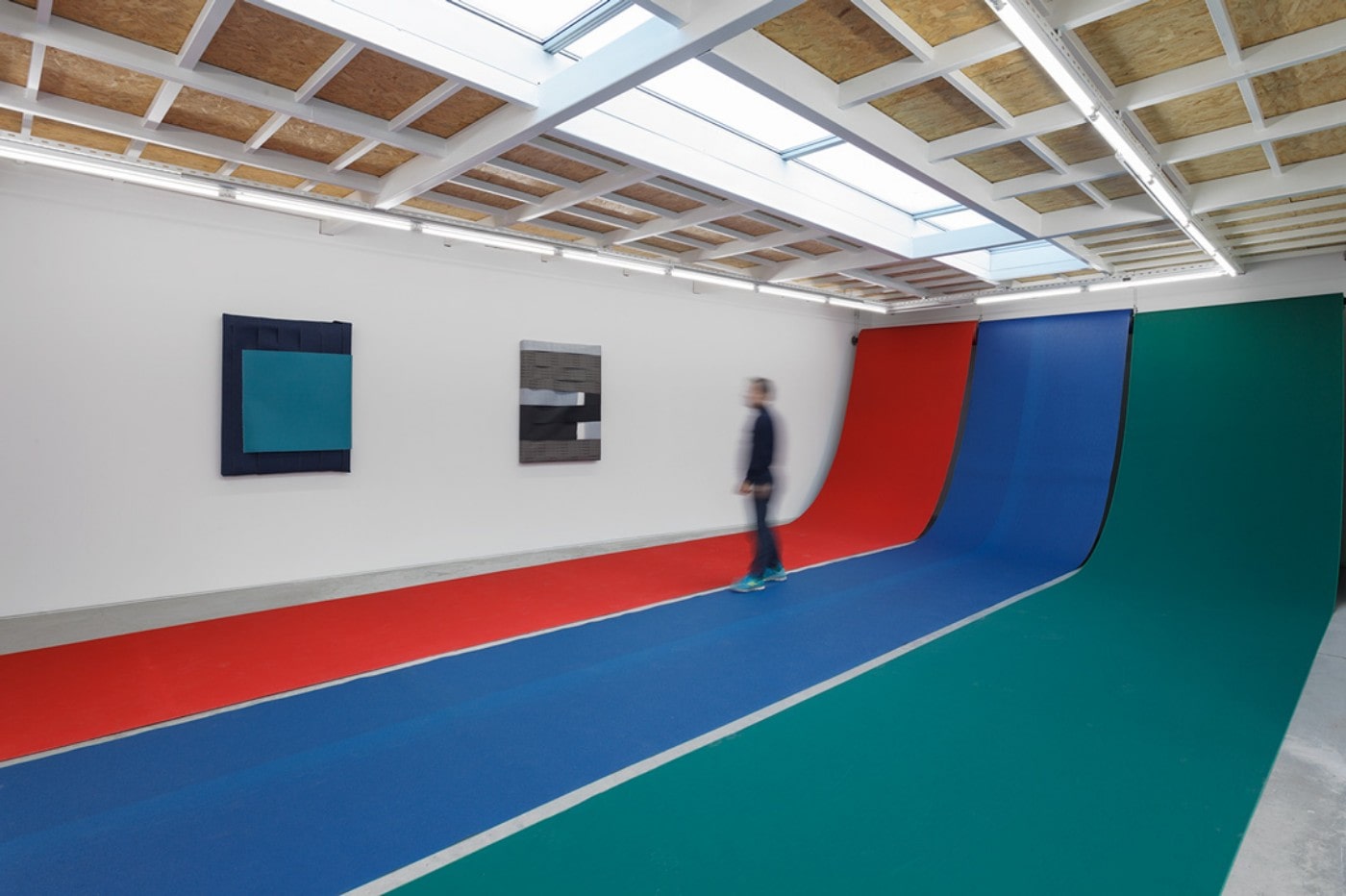
Destruction in western art goes back at least to pre-modern nihilism and the early days of Dada, when Man Ray created his iconic readymade Object to Be Destroyed (1923): a metronome with a cut-out of a woman's eye on its pendulum arm that came with the instruction to be destroyed in a single blow "with a hammer well aimed." Ray was exasperated rather than amused when in 1957 a group of young art idealists took him for his word and kidnapped the object from a Paris gallery, and destroyed it with a gunshot in the middle of the street. He then retaliated by creating 100 identical objects using the same metronome model and photo, and changed the work's title to Indestructible Object.
This happened only a few years after Robert Rauschenberg famously erased a pencil drawing by Willem de Kooning, and then framed it as a new work of art. It was also around this time that Bavarian artist Gustav Metzger published his Auto-Destructive Art manifesto. The movement of auto-destructive art came as a response to the terrifying results of the two big wars of the 20th century and the entropy of capitalism. In a similar spirit, Dutch artist Jean Tinguely started making his famous inefficient machines as a "homage" to modernist industrialism and capitalism, some of which were made with the intention to eventually self-destruct.
Destruction as a creative and aesthetic act persists throughout the remainder of the 20th century, as seen in the way countless artists deploy corrosive and destructive methods to create works of visual art, or engage in (self-) destructive actions in performances and happenings. Ai Weiwei's destruction of a Han-dynasty vase comes to mind, as well as Marina Abramovic's performance heroics. The latest and widely published example of a self-destructive artwork is of course Banksy's "prank" during a Sotheby's auction in October 2018, where a mechanism hidden inside the frame of a million-pound print of his "Girl with Balloon" partially shredded the work. As in the numerous cases before it, Banksy's artwork is not considered destroyed but changed; in fact, a Sotheby's representative has declared it "the first artwork to be created during an auction".
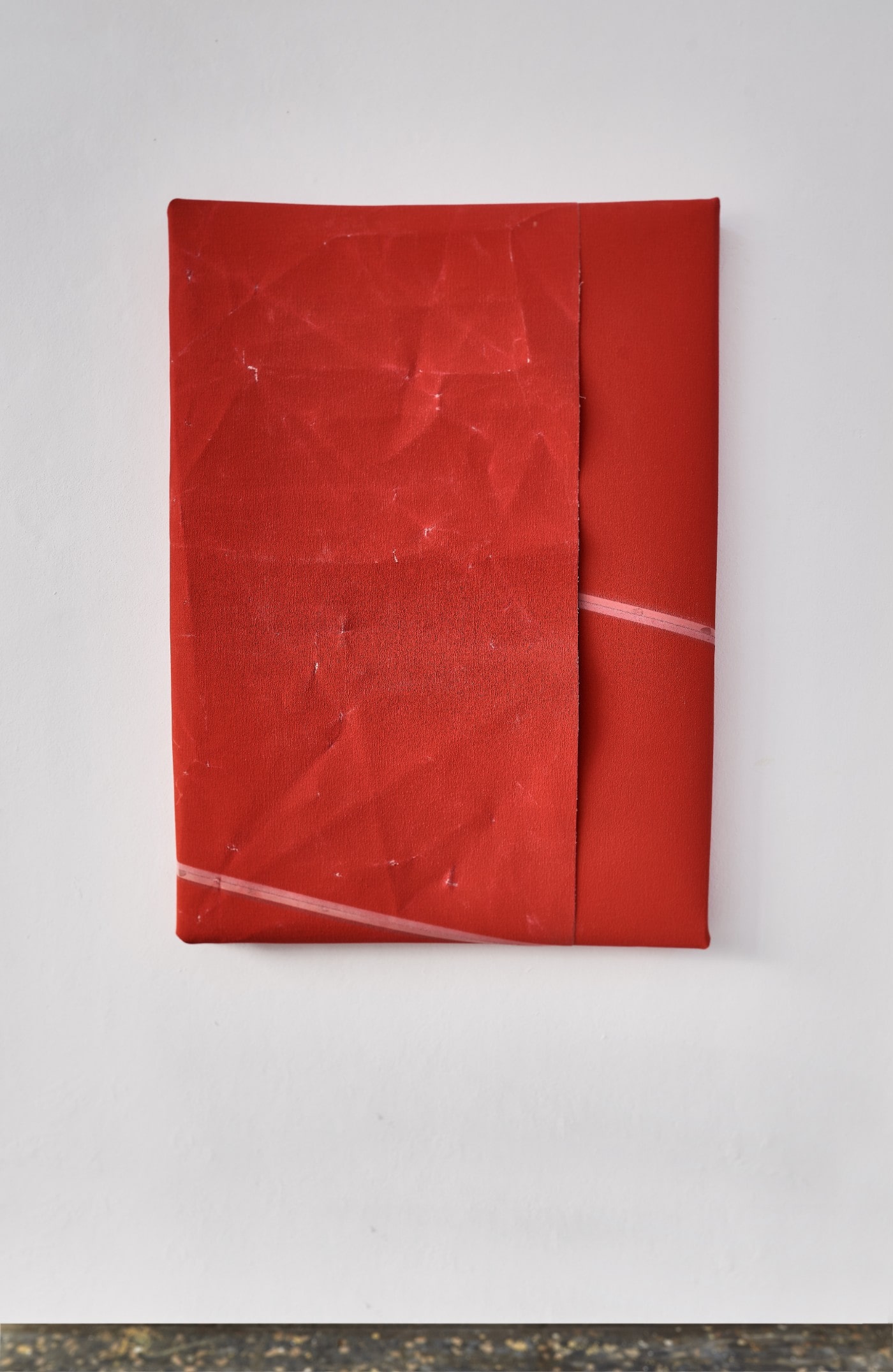
Ahmet Civelek's sandpaper works are not the first instance where the artist deals with destruction. In his Destroyed Objects Paintings he aestheticises broken everyday objects like reading glasses and a pair of gardening shears by glueing them on canvas frames, and for his second solo show titled Number 2: Cycles he created an impactful encounter by filling a gallery space with broken ceramic fragments. Civelek is constantly negotiating his relationship with the destruction of found objects, but always with an apparent intent to salvage, to archive and immortalise the results of the destructive act. While in other artists destruction is linked to impersonal forces and blind aggression, in Civelek destruction is related to more personal and intimate aspects of resistance and emotional expression.
In Number 3: Grit, the destruction is not violent — or at least, its violence and corrosion takes place at an almost invisible scale. Dissolving fabric with acid is straightforward aggression, an outward action that has an explicit intent. Walking across Civelek's sandpaper floor however takes destruction to a smaller scale, where its aggression is concealed and its beauty belies its corrosive effects. In the following short interview, the artist explains more about the ideas behind his new exhibition in his own words.
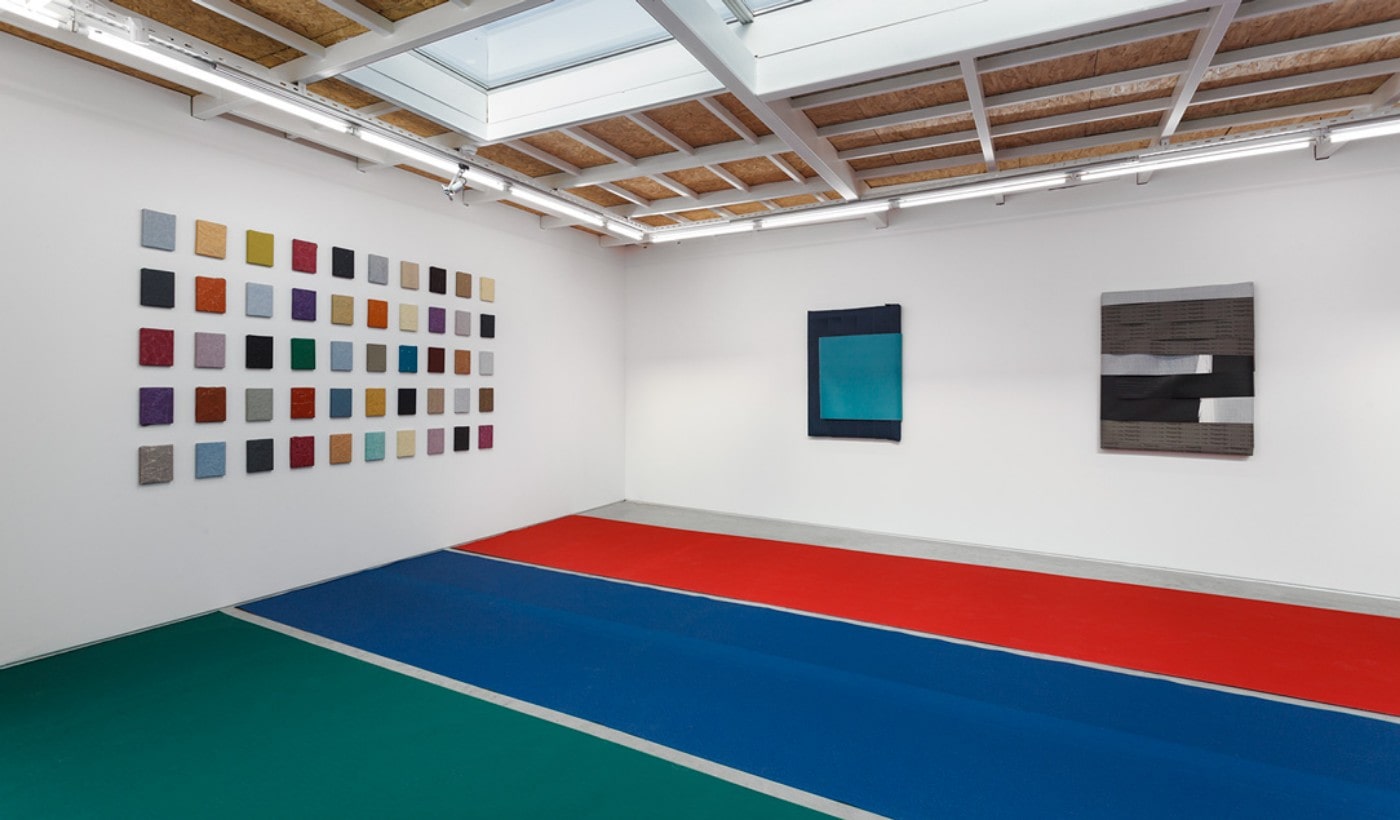
There was a lot of discussion recently about destruction in art after Banksy's stunt at Sotheby's. Can you share your own thoughts on this, and particularly how destruction is part of your own work?
At its core, my interest in destruction developed from an examination of how much we can control something, and how much is accidental. Producing paintings over and over again with the purpose of destroying and [with] an element of accident, over time I lost the opportunity for chance to control the materials.
I read somewhere that Banksy's intention was total destruction of his piece. He hoped and thought that he had total control over the destruction of the work, and this was the most interesting part to me. In fact, realistically he had no control in the process of how the destruction would happen and it did not go as planned. I guess the question is always "is the work finished?".
Do you see a connection between (self-)destruction and the contemporary pop culture in which Westernised societies are immersed?
The connection I feel is inescapable. In any moving image, what most people are interested in is the destruction and failure of objects and people. There is a ridiculous amount of "fail videos" on YouTube, and mass media is also jumping on this wagon with prank shows. One of the pioneers of this genre, solely focused on destruction was "Jackass" aired on MTV in the early 2000s. I watched this show religiously growing up; it was an interesting contrast while growing up in Turkey, which is a country shaken by terrorism quite often.
The realities of growing up in Turkey coupled with entertainment-driven violence and destruction is something that makes me question the definition of what destruction could be.
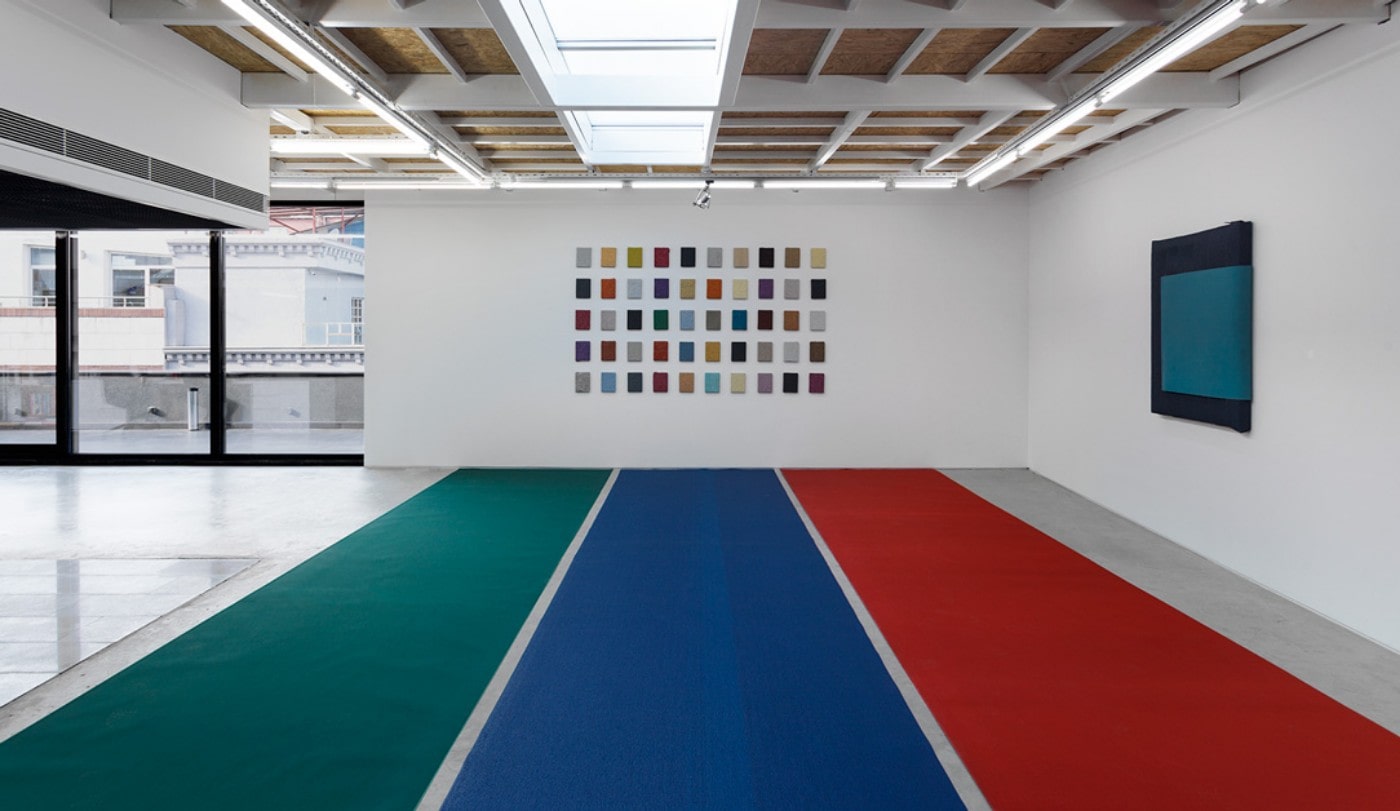
Can you talk us through the process you follow in making your sandpaper works?
Sandpaper’s sole job is to destroy through erosion. What I am trying to achieve is in a way to destroy the destroyer. I physically destroy the sandpaper using my hands and body weight, and then stretch the remaining material over wooden panels as if it were canvas. The folds and the breaks in the pattern of the sandpaper contribute their own form of mark-making. I refer to these [objects] as my Sandpaper Paintings. More recently, I started using the back side of the sandpaper [as well], paying homage to the manufacturers and the factory that they came from. These paintings are representations of a cycle of destruction and creation: sandpaper is created by its manufacturers, is then destroyed and then re-purposed again as a "painting".
*
Ahmet Civelek (b.1988, New York) studied at Pratt Institute (BFA 2009) Brooklyn, USA and Central Saint Martins (Diploma 2010) London, UK. His third solo show Number 3: Grit continues at Pi Artworks Istanbul through 29 December 2018.
